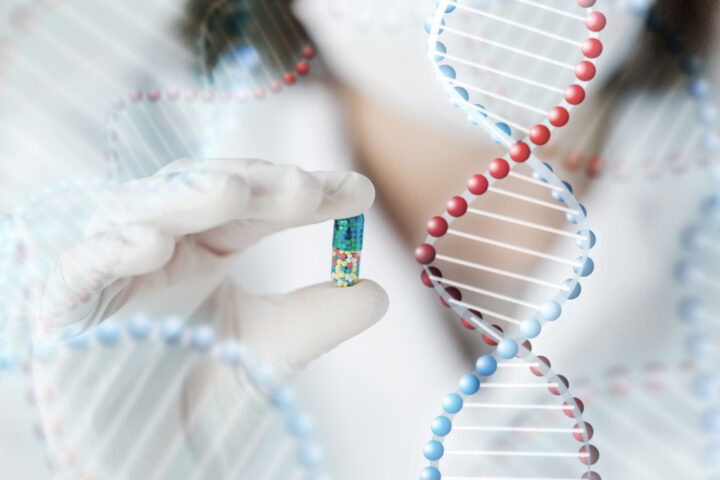Aging is the great equalizer—inescapable, relentless, universal. But for the first time in human history, it might not be inevitable. The frontiers of biomedical science are inching ever closer to interventions that not only slow the aging process but actively reverse it at the cellular level. Imagine a world where gray hairs darken again, aching joints regain their youthful resilience, and degenerative diseases become relics of the past. That world is no longer science fiction.
The following deep dive explores the most promising translational therapies targeting aging: epigenetic reprogramming, senolytics, mitochondrial restoration, stem cell therapies, and CRISPR gene editing. Each of these approaches attacks aging at its roots, addressing cellular decline at a molecular level. Cutting-edge research is accelerating their development, bringing what was once a dream closer to clinical reality.
Epigenetic Reprogramming: Resetting the Biological Clock
The accumulation of epigenetic changes—chemical tags on DNA that influence gene activity—is a major driver of aging. Unlike genetic mutations, epigenetic changes are reversible, making them a tantalizing target for rejuvenation therapies.
Partial Reprogramming: The Yamanaka Factor Breakthrough
One of the most promising approaches involves partial reprogramming, which uses a cocktail of transcription factors—Oct4, Sox2, Klf4, and c-Myc (OSKM)—to reset epigenetic marks without erasing a cell’s identity. Studies in mice have shown that partial reprogramming can restore youthful gene expression patterns, enhance DNA repair, and improve tissue function without causing cancer, a major concern in full reprogramming approaches.
Recent Advances
In a recent study, scientists successfully rejuvenated aged human cells using intermittent reprogramming, reversing decades of epigenetic aging while maintaining normal cell function. Another study demonstrated that age-reprogrammed cells could enhance muscle regeneration and reduce cognitive decline in aged mice, opening the door to regenerative medicine applications.
Senolytics: Killing Zombie Cells to Rejuvenate Tissues
Some cells refuse to die. Instead, they linger in a senescent state, releasing inflammatory signals that wreak havoc on surrounding tissues. This “senescence-associated secretory phenotype” (SASP) is a major contributor to age-related inflammation and chronic disease.
Senolytics in Action
Senolytic drugs selectively eliminate senescent cells, reducing SASP-driven inflammation and restoring tissue function. The most studied senolytics—dasatinib (a leukemia drug) and quercetin (a natural flavonoid)—have been shown to improve cardiovascular function, extend lifespan in mice, and even reduce frailty in elderly humans.
The Next Generation of Senolytics
Researchers have recently unveiled a nano-senolytic therapy that selectively targets senescent cells using biomimetic nanoparticles. This breakthrough allows for more precise elimination of senescent cells with fewer side effects, a major hurdle for previous senolytic approaches.
Mitochondrial Restoration: Reigniting the Cell’s Powerhouse
Mitochondria—the energy-producing organelles within our cells—become increasingly dysfunctional with age, leading to reduced ATP production and increased oxidative stress. Mitochondrial decline is a hallmark of aging and a driver of neurodegeneration, metabolic disorders, and frailty.
Cutting-Edge Strategies
Scientists are developing several strategies to restore mitochondrial function, including:
- Mitochondrial gene therapy: CRISPR-based editing of mitochondrial DNA (mtDNA) to repair age-related mutations.
- Mitophagy enhancement: Activating cellular pathways that clear out defective mitochondria, allowing healthier ones to proliferate.
- Nutraceutical approaches: NAD+ boosters and mitochondrial-targeted antioxidants like MitoQ and SkQ1, which have shown promise in delaying mitochondrial aging.
Recent Breakthrough
A recent clinical trial found that mitochondrial transplantation—injecting healthy donor mitochondria into aged tissues—reversed muscle degeneration and restored energy metabolism in elderly subjects. This approach is being explored as a potential treatment for age-related muscle loss (sarcopenia) and neurodegenerative disorders.
Stem Cell Therapy: Replenishing the Body’s Regenerative Reserves
Aging is accompanied by stem cell exhaustion, leading to reduced tissue repair and regeneration. Restoring stem cell function is one of the most direct ways to combat age-related decline.
Two Key Approaches
- Induced Pluripotent Stem Cells (iPSCs)
- These lab-generated stem cells can be programmed to become any cell type in the body. Scientists are exploring iPSC-based therapies to regenerate aging tissues, from skin to heart muscle.
- Mesenchymal Stem Cells (MSCs)
- Found in bone marrow, fat, and umbilical cord tissue, MSCs secrete factors that modulate inflammation, promote tissue repair, and recruit other cells for regeneration.
Exosome Therapy: A Cell-Free Alternative
Stem cells release exosomes—tiny vesicles loaded with rejuvenating molecules—that can be harnessed without requiring direct stem cell transplantation. Exosome therapy is currently in clinical trials for skin rejuvenation, neurodegenerative diseases, and osteoarthritis.
CRISPR Gene Editing: Rewriting the Code of Life
Gene editing has long been the domain of science fiction, but CRISPR-Cas9 has turned it into reality. Scientists are using CRISPR to correct age-related genetic damage, enhance DNA repair, and suppress aging pathways.
Targeting the Hallmarks of Aging
- Cellular Senescence: CRISPR can knock out genes like p16INK4a and p53, which drive cells into a senescent state.
- Mitochondrial Health: Gene-editing tools are being used to repair mtDNA mutations, restoring energy production in aging cells.
- Telomere Extension: Scientists have successfully used CRISPR to activate telomerase, the enzyme that lengthens telomeres, in aging human cells.
Ethical Considerations and Safety
While gene editing offers unprecedented control over aging biology, concerns about off-target mutations and heritable genetic changes remain. Researchers are developing base editing and prime editing to enhance CRISPR’s precision and minimize risks.
The Dawn of Rejuvenation Medicine
Aging has long been considered an unavoidable fate, but science is proving otherwise. Epigenetic reprogramming, senolytics, mitochondrial restoration, stem cell therapy, and CRISPR gene editing are leading the charge toward a future where aging is not just slowed, but reversed.
The next decade will be pivotal. With clinical trials already underway, some of these therapies may reach patients sooner than expected. The dream of rejuvenation is no longer a fantasy—it is a fast-approaching reality.
Sources
Epigenetic Reprogramming
- Paine, P.T., Nguyen, A., & Ocampo, A. (2024). Partial cellular reprogramming: A deep dive into an emerging rejuvenation technology. Aging Cell, 23, e14039.
- Singh, P.B., & Zhakupova, A. (2022). Age reprogramming: Cell rejuvenation by partial reprogramming. Development, 149, dev200755.
- Yücel, A.D., & Gladyshev, V.N. (2024). The long and winding road of reprogramming-induced rejuvenation. Nature Communications, 15, 1941.
Senolytics
- Zhang, H.R., Xu, X.L., & Shou, X. (2024). Senolytic Therapy Enabled by Senescent Cell-Sensitive Biomimetic Melanin Nano-Senolytics. Advanced Healthcare Materials, 13, e2401085.
- Riessland, M., Ximerakis, M., & Jarjour, A.A. (2024). Therapeutic targeting of senescent cells in the CNS. Nature Reviews Drug Discovery, 23, 817-837.
- Takaya, K., & Kishi, K. (2024). Combined dasatinib and quercetin treatment contributes to skin rejuvenation through selective elimination of senescent cells. Biogerontology, 25, 691-704.
Mitochondrial Restoration
- Zhang, C.S., Meng, Y., & Han, J.H. (2024). Emerging roles of mitochondrial functions and epigenetic changes in the modulation of stem cell fate. Cellular and Molecular Life Sciences, 81, 26.
- Qi, X.M., Qiao, Y.B., & Zhang, Y.L. (2023). PGC-1α/NRF1-dependent cardiac mitochondrial biogenesis: A druggable pathway. Food and Chemical Toxicology, 171, 113513.
- Mishra, S., Kapoor, R., & Sushma. (2024). Deoxynivalenol Induces Drp-1-Mediated Mitochondrial Dysfunction via Elevating Oxidative Stress. Chemical Research in Toxicology, 37, 1139-1154.
Stem Cell Therapy
- Rezazadeh, S., & Ellison-Hughes, G.M. (2024). Stem cell exhaustion in aging. Frontiers in Aging, 5, 1433702.
- Rasouli, M., Naeimzadeh, Y., & Hashemi, N. (2024). Age-Related Alterations in Mesenchymal Stem Cell Function: Understanding Mechanisms. Current Stem Cell Research & Therapy, 19, 15-32.
- Jarrige, M., & Frank, E. (2021). The Future of Regenerative Medicine: Cell Therapy Using Pluripotent Stem Cells. Cells, 10, 240.
CRISPR Gene Editing
- Jing, Y.B., & Jiang, X.Y. (2023). Genome-wide CRISPR activation screening in senescent cells reveals SOX5 as a driver of rejuvenation. Cell Stem Cell, 30, 1452–1471.e10.
- Jia, S.C., & Liang, R.J. (2024). Emerging technology has a brilliant future: The CRISPR-Cas system. Nature Biotechnology, 42, 123-145.
- Li, Z.Y., & Han, Z.M. (2024). Advancements of the CRISPR/Cas9 System in the Treatment of Liver Cancer. Current Protein & Peptide Science, 25, 154-162.












